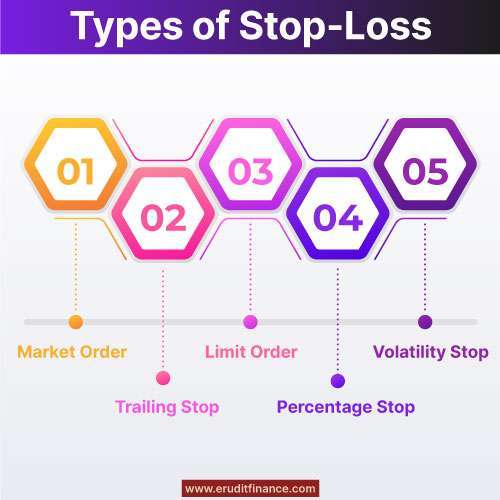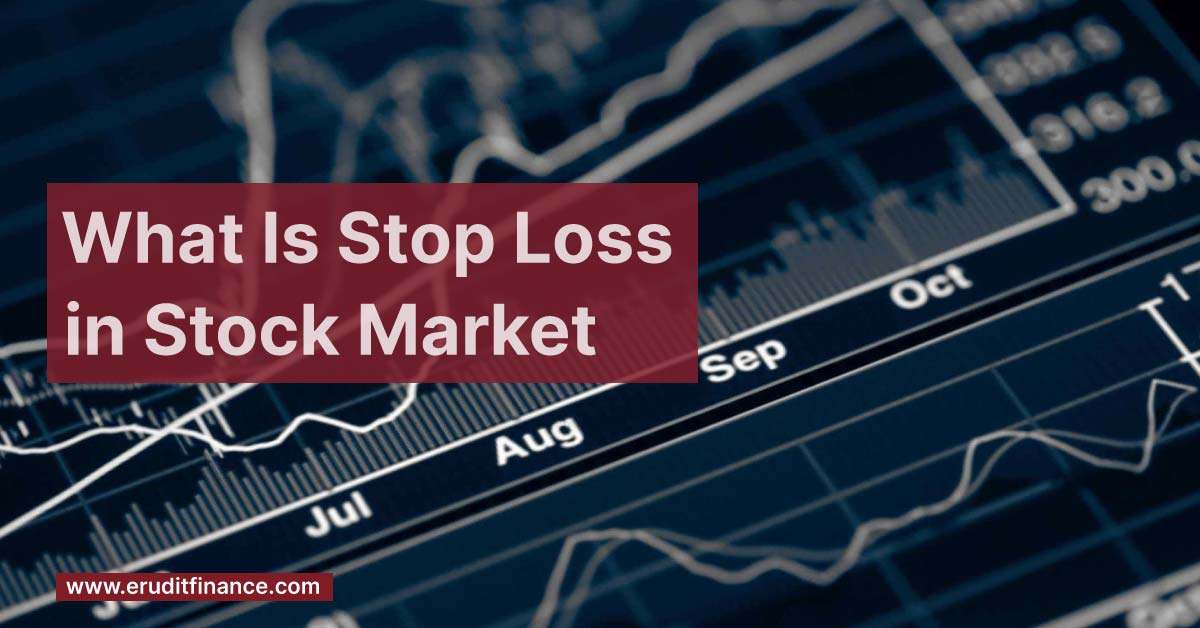In the stock market, a “stop-loss” is a strategic order placed by investors to limit potential losses. When a stock reaches a predetermined price, the order is triggered, automatically selling the stock to minimize losses. This risk management tool is crucial for protecting investments and implementing disciplined trading strategies in the dynamic and sometimes unpredictable stock market environment.
What Is Stop Loss in Stock Market
In the stock market, a “stop-loss” is a crucial risk management tool employed by investors to mitigate potential losses on their investments. It involves setting a predetermined price point at which a security will be automatically sold. The purpose of a stop-loss order is to limit an investor’s downside risk in case the market moves unfavorably.
Here’s how it works: When an investor buys a stock, they may simultaneously place a stop-loss order at a specified price below the current market value. If the stock’s price falls to or below this predetermined level, the stop-loss order is triggered, and the stock is sold. This mechanism helps protect investors from significant losses in the event of unexpected market downturns or adverse price movements.
The use of stop-loss orders is grounded in the principle of disciplined risk management. It enables investors to establish clear exit points and avoid emotional decision-making during periods of market volatility. By setting stop-loss levels based on individual risk tolerance and investment strategies, investors can better control their potential losses and safeguard their portfolios from adverse market conditions.
While stop-loss orders provide valuable protection, it’s important for investors to carefully consider the placement of these orders, taking into account market volatility and potential price gaps that may occur, especially during fast-moving market conditions.
What Is a Good Stop-Loss Percentage?
Determining a good stop-loss percentage depends on various factors, including individual risk tolerance, market volatility, and investment goals. As a general guideline, some investors use a stop-loss level ranging from 1% to 3% below the entry price for less volatile stocks, and up to 5% or more for more volatile ones. It’s essential to consider the specific characteristics of each stock and the broader market conditions. Additionally, investors should reassess and adjust stop-loss levels periodically based on changing market dynamics and their own risk appetite. Adjusting stop-loss percentages helps strike a balance between risk mitigation and allowing for normal market fluctuations.
What Is Stop-Loss in Stock Market With Example?
In the stock market, a “stop-loss” is an order placed by an investor to automatically sell a stock when its price falls to or below a specified level. This risk management strategy helps limit potential losses and provides a predetermined exit point. Here’s an example:
Let’s say an investor buys shares of XYZ Company at $50 per share. To protect against significant losses, they may set a stop-loss order at $45. If the stock price drops to $45 or below, the stop-loss order is triggered, and the shares are automatically sold. This ensures that the investor limits their losses to a predetermined amount and adheres to a disciplined risk management approach.
What Is the Formula for Stop-Loss?
The formula for calculating the stop-loss level involves determining a percentage below the entry price. The general formula is Stop-Loss Price = Entry Price -(Entry Price*Stop-Loss Percentage)
Where,
The stop-loss price is the desired stop-loss level.
Entry Price is the price at which the stock was purchased.
The stop-loss percentage is the predetermined percentage below the entry price.
For example, if an investor buys a stock at $50 and sets a stop-loss at 5%, the calculation would be:
Stop-Loss Price = 50 – (50 * 0.05)
Stop-Loss Price = 50 – 2.5
Stop-Loss Price = 47.5
In this case, the stop-loss order would be placed at $47.5 to limit potential losses to 5% below the entry price. Adjusting the percentage allows investors to tailor their stop-loss strategy based on risk tolerance and market conditions.
What Are the Disadvantages of Stop-Loss?
While stop-loss orders can be valuable tools for risk management in the stock market, they also have some disadvantages. Here are a few considerations.
| Whipsaw Effect | Market Manipulation | False Signals |
| Price Gaps | Over-reliance | Not Foolproof |
-

Disadvantages of Stop-Loss Whipsaw Effect- In volatile markets, prices may quickly fluctuate, triggering stop-loss orders only to see the stock rebound. This can result in investors selling at a loss and missing out on potential recovery.
- Price Gaps- During fast-moving market conditions, prices can gap beyond the specified stop-loss level. In such cases, the stock may be sold at a significantly lower price than anticipated.
- Market Manipulation- Stop-loss orders can be susceptible to market manipulation, where prices are temporarily pushed down to trigger stops before bouncing back.
- Over-reliance- Depending solely on stop-loss orders may lead to over-reliance on automatic selling, preventing investors from making informed decisions based on the broader market context.
- False Signals- Temporary price fluctuations, unrelated to the stock’s fundamentals, can trigger stop-loss orders, leading to premature selling.
- Not Foolproof- Stop-loss orders do not guarantee protection against all market risks. Sudden and extreme events, such as market crashes, may bypass stop-loss levels.
Investors should use stop-loss orders judiciously, taking into account market conditions, stock volatility, and individual risk tolerance. Combining stop-loss orders with a well-thought-out investment strategy and regular monitoring can help mitigate these disadvantages.
Is Stop-Loss Only for Intraday Trading?
No, stop-loss orders are not exclusive to intraday trading; they are commonly used in various trading and investment strategies across different timeframes. Stop-loss orders are versatile tools that can be employed in intraday, short-term, and long-term trading as well as for investments.
What Are the Types of Stop-Loss?
There are several types of stop-loss orders, each serving specific purposes in risk management. Here are some common types.
| Market Order | Trailing Stop | Volatility Stop |
| Limit Order | Percentage Stop | Time Sto |
-

Types of Stop-Loss Market Order- A market order is triggered once the stock reaches a specified price. It is executed at the prevailing market price, which may differ from the specified stop-loss level in volatile markets.
- Limit Order- A limit order becomes a market order once the stock hits a predetermined price, but it is executed only at or better than the specified price. This provides more control over the execution price.
- Trailing Stop- A trailing stop adjusts the stop-loss level based on the stock’s price movements. If the stock rises, the trailing stop follows a set percentage or dollar amount below the highest price, providing a dynamic way to protect profits.
- Percentage Stop- This is a straightforward stop-loss based on a percentage decline from the entry price. For example, a 5% stop-loss would trigger a sell order if the stock falls 5% from the purchase price.
- Volatility Stop- This type adjusts the stop-loss based on the stock’s volatility. In more volatile markets, a wider stop-loss may be used to accommodate larger price swings.
- Time Stop- A time-based stop-loss involves setting a maximum duration for holding a position. If the expected move doesn’t occur within the specified timeframe, the stop-loss order is triggered.
Traders and investors choose the type of stop-loss based on their preferences, risk tolerance, and the characteristics of the stocks or markets they are trading.
Why Is Stop-Loss Important?
Stop-loss orders are important in trading and investing for several key reasons.
| Risk Management | Market Volatility Protection | Preservation of Capital | Position Sizing |
| Emotion Control | Disciplined Trading | Risk-Reward Ratio | Adaptability |
- Risk Management- Stop-loss orders help manage and limit potential losses. By setting predetermined exit points, investors can control the amount of capital at risk in each trade or investment, preventing significant financial setbacks.
- Emotion Control- Trading decisions driven by emotions can lead to poor outcomes. Stop-loss orders provide an objective and disciplined approach to selling positions, reducing the impact of fear and greed on decision-making.
- Market Volatility Protection- Financial markets can be volatile, and prices can fluctuate unexpectedly. Stop-loss orders act as a safeguard against sudden and adverse price movements, offering protection during market downturns.
- Disciplined Trading- Stop-loss orders enforce discipline by helping investors adhere to their trading or investment plans. They prevent holding onto losing positions in the hope of a turnaround and encourage adherence to predetermined risk levels.
- Preservation of Capital- Capital preservation is a fundamental principle in investing. Stop-loss orders play a crucial role in preserving capital by preventing substantial losses that could jeopardize an investor’s overall portfolio.
- Risk-Reward Ratio- Stop-loss orders contribute to establishing a favorable risk-reward ratio. By defining the potential loss in advance, traders can assess whether a trade aligns with their risk tolerance and overall risk management strategy.
- Position Sizing- Knowing the potential loss on a trade allows for effective position sizing. Investors can adjust the size of their positions based on their risk tolerance and the distance to the stop-loss level.
- Adaptability- Stop-loss orders can be adjusted as market conditions change. This adaptability allows investors to respond to evolving market dynamics and adjust their risk exposure accordingly.
In summary, stop-loss orders are a crucial tool for risk management, helping traders and investors control losses, maintain discipline, and navigate the uncertainties of financial markets.
Bottomline:-
In the stock market, implementing stop-loss orders is a fundamental practice for risk management. These orders provide a protective mechanism by setting predetermined exit points, limiting potential losses, and promoting disciplined trading. By curbing emotional decision-making and safeguarding against market volatility, stop-loss orders play a pivotal role in preserving capital and maintaining a balanced risk-reward ratio. Investors leverage these orders to navigate the dynamic nature of financial markets, ensuring a structured approach to decision-making and contributing to the overall longevity and success of their investment strategies.
Also Read:










